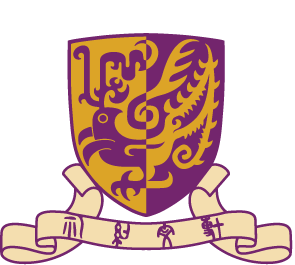
 | 89th Congregation (2020)Professor Harvey F. LODISHDoctor of Science |
Academic life is about making connections. We connect different methods and technologies to make new observations. When we see new connections between observations we can outline new predictions, hypotheses and theories. Isaac Newton’s comment about standing on the shoulders of giants reflects our connections with, while equally acknowledging our debt to, the past. There is a related, contemporaneous component, too: the network of individuals and institutions who participate in our increasingly collaborative academic programmes. The ability to marshal and deploy all these kinds of connections is a key attribute for progress in research.
But there are at least three further connections that help to determine the value of that research. One is the connection with those new to the field – the ability not just to attract them in but then to pass on the research skills or even entire research programmes that will let them flourish and contribute as researchers in their own right. Another is the connection between academic and practical worlds – putting discoveries to work. And, of course, we all hope that one day someone will stand on our shoulders to see further than otherwise they could (and that those we educate who don’t choose an academic life will nonetheless benefit from the clarity of thought we seek to instil and put it to good use in other walks of life).
Today’s honorand, Professor Harvey Lodish, is a Master Connector. His university life began at a distinguished liberal arts college with a long history and some remarkable alumni: Kenyon College, in Gambier, Ohio. It was founded in 1824 by Philander Chase (an Episcopal bishop with a name one simply could not give in the #MeToo era) largely depending on benefactions from England. Lord Kenyon gave his name to the College. Admiral of the Fleet Lord Gambier (‘Dismal Jimmy’ to the Royal Navy in which he served) gave his name to the town. Jane, Dowager Countess of Rosse, the most generous donor was less clearly commemorated, though her family is far more memorable than either of theirs. Her family at Birr Castle in Ireland became extraordinary scientist-inventors: the reflecting telescope they built there was the largest in the world for over 70 years; the steam turbine was invented there; the 3rd Earl became President of the Royal Society; and a steam-powered carriage that his sons designed and built clipped the kerb turning a corner, and threw out a passenger who died instantly, on 31st August 1869, almost exactly 150 years ago. She was the world’s first recorded automobile fatality. (Her name was Mary Ward, and she was my partner’s great grandmother: a connection for me.) How appropriate that Countess Rosse’s benefaction helped to produce one of the leading scientists of our time.
Professor Lodish graduated from Kenyon College summa cum laude and with the Highest Honours in chemistry and mathematics. Graduating is not the same as leaving: a quarter of a century later he became a member of the College’s Board of Trustees on which he served for almost 20 years. He remains an Emeritus Trustee. Here is a connection which has truly lasted.
What might an adventurous scientist with his qualifications do next, in the early 1960s? The Life Sciences called – a big step then, but, as the benefit of hindsight allows us all so clearly to see, a field with enormous potential that needed to bring chemists and mathematicians on board if it was going to be able to exploit the extraordinary advances made over the preceding decade. Surely nothing was more exciting than what was happening in genetics, and that is where Harvey Lodish took his skills. The Rockefeller Institute, which had focused first on public health and then, increasingly, on cell biology wanted to draw in physicists and mathematicians. Genetics was a particular strength there, and Harvey Lodish joined Dr Norton Zinder’s laboratory which was carrying out pioneering work on bacteriophages, their genetic makeup, and their ability to manipulate the genetic makeup of bacteria. These natural genetic engineers have become increasingly prominent items of interest in an age of developing antibiotic resistance, through their roles as tiny, intracellular Trojan horses. ‘Timeo Danaos et dona ferentes: I fear the Greeks even when they bring gifts’ as Virgil tells us – and yet what potential for good these tiny Trojan can offer, if only we can control them. You can see the concepts of signalling between cells, and of using tiny, natural vehicles to carry therapeutic agents to otherwise inaccessible targets, in the work carried out in Professor Lodish’s laboratory to this day.
With a doctorate at what had by then just become the Rockefeller University could there be a place that might still attract a young scientist away? The Medical Research Council Laboratory of Molecular Biology in Cambridge, England, was just such a place. It was undoubtedly the most extraordinary biological research establishment in the world at the time. Crick and Watson were awarded the Nobel Prize in Physiology or Medicine in 1962 for elucidating the structure of DNA, and at the same ceremony Kendrew and Perutz received the Nobel Prize in Chemistry: they had solved the structures of myoglobin and haemoglobin. (Sanger had received the first of his two Nobel Prizes – in Chemistry – four years earlier, but had to wait until 1980 for a second.) Crick was working at this extraordinary place with Sydney Brenner, a thoughtful, witty and delightful South African and a key member of what is sometimes called ‘the phage group’ (a connection, therefore, with Zinder). Brenner’s own Nobel Prize was awarded in 2002; he died in 2019. Those are the people with whom Harvey Lodish went to work. What a place to be a post-doc interested in protein structures and genetics – or in inspiring other scientists.
From Cambridge, England, he moved to Cambridge, Massachusetts – from LMB to MIT, where he has been since 1968 – initially in the Department of Biology and then at the Whitehead Institute for Biomedical Research. He is a Founding Member of Whitehead and also a Professor of Biological Engineering at MIT. He has worked on protein synthesis and structure – particularly of glycoproteins which we can think of as being part protein, part sugar. These are molecules whose complex shapes can be altered by folding, and this in turn can change their biochemical properties. The devastating ‘Mad Cow Disease’ which destroyed brain structures in humans unlucky enough to have eaten the wrong part of infected cows results from the mis-folding of a brain protein. Parkinson’s disease may be another protein misfolding condition of the human brain. Protein conformation is crucial for us all. His lab has a particular focus on red blood cells – at least in part because he showed that they can be used as tiny vehicles to deliver therapies – and on the paths which red blood cells and fat cells follow during development, as well as on ways they change their properties once developed. All these projects link gene function and protein biology to human physiology in health and disease, with a particular emphasis on treating rare diseases – conditions that the leviathans of the pharmaceutical world typically ignore, yet whose sufferers deserve just as much help as any other sufferer. He has founded seven biotechnology companies including three that became publicly traded: Genzyme, Millennium, and Rubius; written well over 600 peer-reviewed papers; and is lead author of the definitive textbook Molecular Cell Biology, now in its 8th edition and translated into 12 languages. These are outputs with real world consequences. Indeed, in the 1980s he helped develop Genzyme’s first therapeutic – an enzyme replacement for Gaucher Disease, an inability of the body to degrade a certain fatty substance. Fifteen years later he learned that one of his grandsons has this rare disease; Andrew is now 16 and for the past 6 years has been treated successfully with the drug his grandfather helped develop. What a fitting, personal benefit to arise from a public good.
Cells have developmental lineages. So do scientists. Over half a century Professor Lodish has passed on to others the knowledge, experience and connections from which he has so clearly benefited himself. He is a renowned mentor. One distinguishing mark of some of the very best of us is that they not only make major discoveries but also enable and inspire others to make their own major discoveries. They combine with the motivation and drive of the explorer a generosity of spirit whose rewards lie – at least in part – in what is discovered and not just in the glory of themselves being the discoverer. The 200 or more scientists who have gone through the Lodish lab include two who are already Nobel Laureates and Lasker Prize winners, as well as a substantial group whose remarkable achievements have been recognised in other ways. Harvey Lodish’s thoughts and writings about mentoring explain that to bring exceptional people to his lab and ensure that they flourish there he makes it a family-friendly place. People are not excluded in virtue of having children; indeed, parents thrive there. One notable consequence is his 2017 Women in Cell Biology Senior Leadership Award from the American Society for Cell Biology[1], which followed an earlier Mentor Award from the American Society of Haematology.
‘Only connect’, said David Hume. But he could have said more. Disconnection also has a role. One striking aspect of Professor Lodish’s exceptional mentoring is that he supports and never competes with his former post-docs, letting them take with them large parts of their current research programmes. Yet at the same time he organises gatherings of past and present trainees to expand their networks and encourage new collaborations: truly he enables them to have their cake and eat it.
An Engineer of Tiny Things; a Master of Connections, yet a generous disconnector, Mr Chairman, it is my privilege to present to you Professor Harvey F. Lodish for the award of Doctor of Science, honoris causa.
This citation is written by Professor Nicholas Rawlins
[1] Each year, the American Society for Cell Biology honours three investigators at distinct career stages through recognition awards. The first two awards are given to woman scientists who have held an independent position within 7 years and 7–15 years respectively. The third award recognizes a woman or man at a later career stage whose outstanding scientific achievements are coupled with a record of active leadership in mentoring both men and women in scientific careers.




